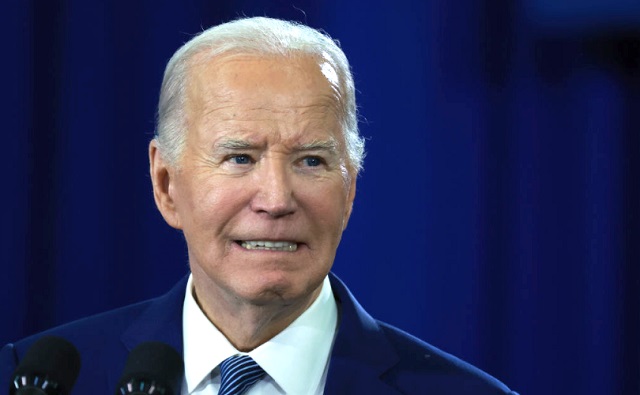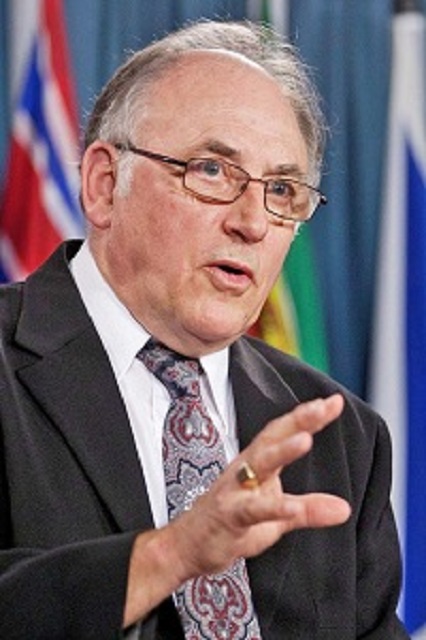Alberta
Education Minister Adriana LaGrange announces nearly 25,000 new and upgraded spaces for students

Investing in new schools, modernized spaces
Alberta’s government is investing $2.3 billion over the next three years, for new and modernized classrooms.
Budget 2023 supports 58 projects, which includes 13 full construction projects, 20 design, 14 planning and 11 pre-planning projects. In total, there will be nearly 25,000 new and additional spaces for students across Alberta – 9,400 new spaces and more than 15,500 student upgraded spaces. This includes approximately 4,500 new and upgraded spaces in Calgary, 4,100 in Edmonton and 16,300 for the rest of the province.
“Alberta’s young learners are the community and business leaders of tomorrow. They need the right spaces to gain the tools and skills needed to prepare for their bright futures. By investing in our schools, we’re investing in our students while at the same time creating more jobs and supporting the local economy.”
This investment in education infrastructure includes:
- $372 million for construction and design projects:
- 10 new schools
- 16 replacement schools
- seven modernizations
- $4 million to support planning activities such as site analysis and scope development for 14 projects
- $1 million to pre-plan 11 conceptual projects that are anticipated to become high-priority needs for school jurisdictions
- $1 billion to continue work on previously announced projects
- $300 million over three years in school authority self-directed capital projects
- $279 million to support the maintenance and renewal of existing school buildings through the Capital Maintenance and Renewal Program
- $171 million to support public charter school infrastructure, including investment for a charter hub in Calgary
- $43 million to fund facility upgrades for successful collegiate school applicants
- $93 million for the modular classroom program to address urgent space needs across the province
“The Alberta government is investing in critical infrastructure projects that include upgrading and building high-quality schools to ensure Albertans can send their children to schools in their local communities. Our focus is on ensuring these projects are delivered on time, on budget and where they’re needed.”
The availability of suitable sites has been one of the biggest roadblocks causing delays to school projects. That’s why, through Budget 2023, Alberta’s government is creating a new School Planning Program that will serve as a transparent “pipeline” for upcoming school projects to begin as soon as formal construction funding is approved. Fourteen school projects will begin planning and site development through this new program while a further 11 projects will receive pre-planning funding to assist with developing scope options.
The planning program will allow for the further development of project scope and site investigation work. It will also help to clarify potential risks and identify mitigating strategies and costs. The goal is to provide school boards with the resources they need to remove barriers and better position the project for design consideration and construction approval in future budget cycles, which is expected to reduce costs and minimize schedule disruptions and delays.
“The Calgary Catholic Board of Trustees is grateful for the capital projects announced for the Calgary Catholic School District, which includes full funding for the K-9 school in Nolan Hill to serve this rapidly growing community. We anticipate receiving the full construction funding for the Rangeview high school and Chestermere K-9 school as soon as possible, after the design process is completed. These projects need urgent attention given the critical need for school infrastructure and CCSD’s high utilization rate in these communities. CCSD appreciates the pre-planning commitment towards the construction of the K-9 school in Redstone, the addition/enhancement of Bishop McNally High School and the construction of a new west-end high school.”
“On behalf of CBE students and their families, we thank the Government of Alberta for the capital plan announcement. These extraordinary and timely investments in infrastructure are vital to support student learning opportunities within our system.”
“This is an exciting day for Elk Island Public Schools, for the community and especially for students of both École Campbelltown and Sherwood Heights Junior High. A modern, well-equipped and efficient building will allow us to continue to offer the quality education students need to succeed in the classroom and will help ease the growth pressures we are facing in Sherwood Park.”
Quick facts:
- Full construction funding activities include construction and post-occupancy review.
- Design funding activities include the preparation of construction tender documents such as drawings and specifications.
- Planning funding activities include site analysis and scope development activities.
- Pre-planning funding allows a conceptual project to define scope elements, programming priorities and includes activities such as community engagement.
- To support the decision-making process for delivering infrastructure projects, the Ministry of Infrastructure passed the Infrastructure Accountability Act in December 2021. This act outlines how the province prioritizes projects for the annual capital plan.
- As legislated by the act, the government also published Building Forward: Alberta’s 20-Year Strategic Capital Plan in December 2021, providing a blueprint for long-term infrastructure investment and development in Alberta.
- The government’s budget decisions are made in accordance with the act and are guided by the strategic capital plan to ensure future capital investments benefit Albertans.
- Government partners, such as municipalities and school boards, will also be able to plan for capital funding knowing the long-term direction of government.
Budget 2023 school projects – full construction funding (13):
| Community | School division | Project type/Name |
| Airdrie | Conseil scolaire FrancoSud | new secondary school |
| Calgary | Calgary Board of Education | modernization of John G. Diefenbaker High School |
| Calgary | Calgary Roman Catholic Separate School Division | new K-9 school in Nolan Hill |
| Edmonton | Conseil scolaire Centre-Nord | solution for École Michaëlle-Jean and École Gabrielle-Roy |
| Edmonton | Edmonton Public School Board | new K-9 school in Edgemont |
| Lethbridge | Holy Spirit Roman Catholic Separate School Division | new K-6 school in west Lethbridge |
| Lethbridge | Conseil scolaire FrancoSud | École La Vérendrye gym project |
| Okotoks | Christ the Redeemer Catholic Separate School Division | replacement of École Good Shepherd School |
| Penhold | Chinook’s Edge School Division | replacement of Penhold Elementary School |
| Raymond | Westwind School Division | new high school |
| Sherwood Park | Elk Island School Division | solution for Sherwood Park |
| Valleyview | Northern Gateway School Division | solution for Valleyview |
| Waskatenau | Lakeland Roman Catholic Separate School Division | replacement of Holy Family Catholic School |
Budget 2023 school projects – design funding (20):
| Community | School division | Project type/Name |
| Airdrie | Rocky View School Division | new K-8 school in southwest Airdrie |
| Barrhead | Pembina Hills School Division | modernization and rightsizing of Barrhead Composite High School |
| Blackfalds | Red Deer Catholic Separate School Division | new K-5 school |
| Bow Island / Burdett | Prairie Rose School Division | solution for Bow Island and Burdett |
| Breton | Wild Rose School Division | modernization and rightsizing of Breton High School and demolition of Breton Elementary School |
| Brooks | Grasslands School Division | replacement of Brooks Junior High School |
| Chestermere | Calgary Roman Catholic Separate School Division | new K-9 school |
| Calgary | Calgary Roman Catholic Separate School Division | new high school in Rangeview |
| Edmonton | Edmonton Catholic Separate School Division | solution for Rundle Heights |
| Edmonton | Edmonton Public School Board | new junior/senior high school in Glenridding Heights |
| Fort McMurray | Conseil scolaire Centre-Nord | replacement of K-12 École Boréale |
| Lac La Biche | Northern Lights School Division | replacement of Vera M. Welsh School |
| Leduc | Black Gold School Division | modernization of École Corinthia Park School |
| Mallaig | St. Paul School Division | replacement of École Mallaig School |
| Medicine Hat | Medicine Hat Roman Catholic Separate School Division | replacement of St. Francis Xavier School |
| Nanton | Livingstone Range School Division | solution for Nanton |
| Red Earth Creek | Peace River School Division | replacement of Red Earth Creek School |
| Spruce Grove | Parkland School Division | replacement of Spruce Grove Composite High School |
| Taber | Horizon School Division | modernization of the W.R. Myers and D.A. Ferguson schools |
| Wainwright | Buffalo Trail School Division | replacement of Wainwright School |
Budget 2023 – School Planning Program projects (14):
| Community | School division | Project type/Name |
| Airdrie | Rocky View School Division | new grades 9-12 school |
| Calgary | Calgary Board of Education | modernization of Annie Gale School |
| Calgary | Calgary Board of Education | new high school in Cornerstone |
| Coalhurst | Palliser School Division | modernization of Coalhurst High School |
| Donnelly | High Prairie School Division | G. P. Vanier School |
| Edmonton | Edmonton Catholic Separate School Division | new K-9 school in Heritage Valley Cavanagh |
| Edmonton | Edmonton Public School Board | new K-6 school in Rosenthal |
| Edmonton | Edmonton Public School Board | new elementary school in Glenridding Heights |
| Fort McMurray | Fort McMurray School Division | modernization of Westwood Community High School |
| Grande Prairie | Peace Wapiti School Division | new high school north of Grande Prairie |
| Lethbridge | Lethbridge School Division | modernization of Galbraith Elementary School |
| Okotoks | Foothills School Division | new high school |
| Stettler | Clearview School Division | modernization and addition at Stettler Middle School |
| Strathmore | Golden Hills School Division | replacement of Westmount School |
Budget 2023 – Pre-Planning Program projects (11):
| Community | School division | Project type/Name |
| Calgary | Calgary Board of Education | modernization of A.E. Cross School |
| Calgary | Calgary Board of Education | modernization of Sir John A. Macdonald School |
| Calgary | Calgary Board of Education | new Saddle Ridge middle school |
| Calgary | Calgary Roman Catholic Separate School Division | new elementary school in Redstone |
| Calgary | Calgary Roman Catholic Separate School Division | addition at Bishop McNally High School |
| Calgary | Calgary Roman Catholic Separate School Division | new west Calgary high school |
| Chestermere | Rocky View School Division | new K-9 school |
| Cochrane | Rocky View School Division | new K-5/K-8 |
| Edmonton | Edmonton Catholic Separate School Division | new north K-9 school |
| Edmonton | Edmonton Public School Division | new junior high school in Pilot Sound/McConachie |
| Red Deer | Red Deer Public Schools | new northeast middle school |
Alberta
Activity-Based Hospital Funding in Alberta: Insights from Quebec and Australia

From the Montreal Economic Institute
Quebec has experienced increased productivity and efficiency, as well as reduced costs, in those sectors to which ABF has been applied
Alberta’s healthcare system costs more than those of many of its peers across Canada and internationally, yet underperforms by many metrics—wait times perhaps being the most visible.(1) For instance, while Alberta consistently spends a fair deal more per capita on health care than Canada’s other large provinces do, the median wait time from referral by a GP to treatment by a specialist was 33.3 weeks in 2022, versus 29.4 weeks in Quebec, 25.8 weeks in British Columbia, and 20.3 weeks in Ontario. Albertans waited a median 232 days for a hip replacement that year, longer than those in Quebec, British Columbia, and Ontario.(2) In Australia, meanwhile, the median wait time for a total hip replacement in 2022 was 175 days in public hospitals.(3)
One of the things keeping Alberta’s healthcare system from better performance is that it relies on global budgets for its hospital financing. Such a system allocates a pre-set amount of funding to pay for an expected number of services, based largely on historical volume. The problem with global budgets is that they disregard the actual costs incurred to deliver care, while undermining incentives to improve outcomes. This ultimately leads to rationing of care, with patients viewed as a cost that must be managed.
Activity-based funding systems are associated with reduced hospital costs, increased efficiency, and shorter wait times, among other things.
An alternative is activity-based funding (ABF), which has largely replaced global budgeting in many OECD countries, and is starting to do so in some Canadian provinces.(4) With ABF, hospitals receive a fixed payment for each specific service delivered, adjusted for certain parameters.(5) If a hospital treats more patients and delivers more services, it receives more funding; if it does less, it receives less. In essence, the money follows the patient, which has a dramatic effect: patients are now viewed as a source of revenue, not merely as a cost. Studies have shown that ABF systems that include appropriate safeguards for quality and waste are associated with reduced hospital costs, increased efficiency, and shorter wait times, among other things.(6)
To increase its capacity and performance, Alberta should consider moving to such a system for hospital financing. As over 25% of total health spending in the province goes to hospitals,(7) driving down costs and finding efficiencies is of paramount importance.
ABF models vary by jurisdiction and context to account for distinct situations and the particular policy objectives being pursued.(8) Two jurisdictions provide interesting insights: Quebec, with ABF hospital funding being gradually implemented in recent years, and Australia, where after more than three decades, ABF is the rule, global budgets the exception.
ABF in Quebec: Increased Performance and Decreased Costs
Quebec’s hospital payment reforms over the past two decades have been aimed at better linking funding with health care delivery to improve care quality and access.(9) These patient-based funding reforms (a type of ABF) have resulted in increased volumes and efficiency, and reduced costs and wait times for a number of surgical and other procedures in Quebec.(10)
These reforms started in 2004, when Quebec applied ABF in the context of additional funding to select surgeries in order to reduce wait times through the Access to Surgery Program.(11) The surgeries initially targeted were hip replacement, knee replacement, and cataract surgeries, but other procedures were eventually integrated into the program as well. Its funding covered the volume of surgeries that exceeded those performed in 2002-2003, and it used the average cost for each specific surgery. Procedures were classified by cost category, which also took into account the intensity of resource use and unit cost based on direct and indirect costs.
The expansion of ABF in Quebec aims to relieve hospital congestion by driving down wait times and shrinking wait lists.
By 2012-2013, this targeted program had helped to significantly increase the volume of surgeries performed, as well as decrease wait times and length of stay.(12) However, as ABF was applied only to surplus volumes of additional surgeries, efficiency gains were limited. For this reason, among others, the Expert Panel for Patient-Based Funding recommended expanding the program,(13) and in 2012, the Government of Quebec began considering further pilot projects for gradual ABF implementation.(14)
- In 2015, ABF was implemented in the radiation oncology sector, which resulted in better access to services at a lower cost, with productivity having increased more than 26% by 2023-2024, and average procedure costs having fallen 7%.(15)
- In 2017-2018, ABF was implemented in imaging, which resulted in the number of magnetic resonance imaging tests increasing more than 22% while driving the unit cost of procedures down 4%.(16)
- Following the above successes, in 2018-2019, the colonoscopy and digestive endoscopy sector also moved to ABF, which led to a productivity increase of 14% and a 31% decrease in the case backlog.(17)
Overall, then, Quebec has experienced increased productivity and efficiency, as well as reduced costs, in those sectors to which ABF has been applied (see Figure 1).

The Department of Health and Social Services continued to expand ABF to more surgeries in 2023, following which it was expected that about 25% of the care and services offered in physical health in Quebec hospitals would be funded in this manner, with the goal of reaching 100% by 2027-2028.(18) Further, the 2024-2025 budget expanded ABF again to include the medicine, emergency, neonatal, and dialysis sectors.
This expansion of ABF aims to relieve hospital congestion by driving down wait times and shrinking wait lists.(19) It will also align Quebec’s health care funding with what has become standard in most OECD countries. In Australia, for instance, ABF is the rule, not the exception, covering a large proportion of hospital services.
Australia’s Extensive Use of ABF
Australia also implemented ABF in stages, as Quebec is now doing. It was first introduced in the 1990s in one state and adopted nationally in 2012 for all admitted programs to increase efficiency, while also integrating quality and safety considerations.(20) These considerations act as safeguards to ensure efficiency incentives don’t negatively impact services. For instance, there are adjustments to the ABF payment framework in the presence of hospital acquired complications and avoidable hospital readmissions, two measures of hospital safety and service quality.(21) If service quality were to decrease, funding would be adjusted, and payments would be withheld. Not only has ABF been successful in increasing hospital efficiency in Australia, but it has also enabled proactive service improvement, which has in turn had a positive impact on safety and quality.(22)
ABF now makes up 87.0% of total hospital spending in Australia, ranging from 83.6% in Tasmania to 93.0% in the Australian Capital Territory.
Currently, ER services, acute services, admitted mental health services, sub-acute and non-acute services, and non-admitted services are funded with ABF in Australia. This includes rehabilitation, palliative, geriatric and/or maintenance care.(23) Global budgets are still used for some block funding, but this is the exception, restricted to certain hospitals, programs, or specific episodes of care.(24) Small rural hospitals, non-admitted mental health programs, and a few other highly specialized therapies or clinics or some community health services tend to be block funded due to higher than average costs stemming from a lack of economies of scale and inadequate volumes, among other things.
When first introduced, ABF made up about 25% of hospital revenue (approximately where Quebec currently stands).(25) ABF now makes up 87.0% of total hospital spending in Australia, ranging from 83.6% in Tasmania to 93.0% in the Australian Capital Territory (see Figure 2).

There is more variability, however, at the local hospital network level within territories or states. For instance, between 2019 and 2024, an average of 92.3% of total funding for the hospitals in the South Eastern Sydney Local Health District was ABF, and just 7.7% was block funding.(26) For the hospitals in the Far West Local Health District, in comparison, ABF represented an average of 72.0% of total funding, and block payments 28.0%, over the same period.(27)
The proportion of ABF funding per hospital is dictated, for the most part, by the types and volumes of patient services provided, but also by hospital characteristics and regional patient demographics.(28) For example, there could be a need to compensate for differences in hospital size and location, or to reimburse for some alternative element of the fixed cost of providing services. In the Far West Local Health District, on average 65.1% of block funding between 2019-2020 and 2023-2024 was provided for small rural hospitals, while only 1.4% of the block funding in the South Eastern Sydney Local Health District was for these types of hospitals.(29) Ultimately, these two districts serve very different populations, with the Far West Local Health District being the most thinly populated district in Australia.(30)
Overall, ABF implementation in Australia has significantly improved hospital performance. Early after ABF implementation, the volume of care in Australia increased, and waiting lists decreased by 16% in the first year.(31) Between 2005 and 2017 the hospitals that were funded by ABF in Queensland became more efficient than those receiving block funding.(32) In addition, ABF can contribute to reductions in extended lengths of stay and hospital readmission,(33) both of which are expensive propositions for health care systems and also tie up hospital beds and resources.
Conclusion
ABF has been associated with reduced hospital costs, increased efficiency, and shorter wait times, areas where Alberta is lacking and reform is needed. To increase its health system performance, Alberta should consider emulating Quebec and moving to an activity-based funding system. Indeed, based on the experience of countries like Australia, widespread application should be the goal, as it is in Quebec. Alberta patients have already waited far too long for timely access to the quality care they deserve. The time to act is now.
The MEI study is available here.
* * *
This Economic Note was prepared by Krystle Wittevrongel, Senior Policy Analyst and Alberta Project Lead at the MEI. The MEI’s Health Policy Series aims to examine the extent to which freedom of choice and entrepreneurship lead to improvements in the quality and efficiency of health care services for all patients.
The MEI is an independent public policy think tank with offices in Montreal and Calgary. Through its publications, media appearances, and advisory services to policy-makers, the MEI stimulates public policy debate and reforms based on sound economics and entrepreneurship.
Alberta
Red Deer Doctor critical of Alberta’s COVID response to submit report to Danielle Smith this May

From LifeSiteNews
Leading the task force is Dr. Gary Davidson, who was skeptical of mandates at the time.
Alberta Premier Danielle Smith will soon be receiving a little-known report she commissioned which tasked an Alberta doctor who was critical of the previous administration’s handling of COVID to look into how accurate the province’s COVID data collection was, as well as the previous administration’s decision-making process and effectiveness.
As noted in a recent Globe and Mail report, records it obtained show that just less than one month after becoming Premier of Alberta in November of 2022, Smith tasked then-health minister Jason Copping to create the COVID data task force.
Documents show that the Alberta government under Smith gave the new task force, led by Dr. Gary Davidson – who used to work as an emergency doctor in Red Deer, Alberta – a sweeping mandate to look at whether the “right data” was obtained during COVID as well as to assess the “integrity, validity, reliability and quality of the data/information used to inform pandemic decisions” by members of Alberta Health Services (AHS).
As reported by LifeSiteNews in 2021, Davidson said during the height of COVID that the hospital capacity crisis in his province was “created,” was not a new phenomenon, and had nothing to do with COVID.
“We have a crisis, and we have a crisis because we have no staff, because our staff quit, because they’re burned out, they’re not burnt out from COVID,” Davidson said at the time.
Davidson also claimed that the previous United Conservative Party government under former Premier Jason Kenney had been manipulating COVID statistics.
In comments sent to the media, Smith said that in her view it was a good idea to have a “contrarian perspective” with Davidson looking at “everything that happened with some fresh eyes.”
“I needed somebody who was going to look at everything that happened with some fresh eyes and maybe with a little bit of a contrarian perspective because we’ve only ever been given one perspective,” she told reporters Tuesday.
“I left it to [Davidson] to assemble the panel with the guidance that I would like to have a broad range of perspectives.”
Smith took over from Kenney as leader of the UCP on October 11, 2022, after winning the leadership of the party. The UCP then won a general election in May 2023. Kenney was ousted due to low approval ratings and for reneging on promises not to lock Alberta down during COVID.
After assuming her role as premier, Smith promptly fired the province’s top doctor, Deena Hinshaw, and the entire AHS board of directors, all of whom oversaw the implementation of COVID mandates.
Under Kenney, thousands of nurses, doctors, and other healthcare and government workers lost their jobs for choosing to not get the jabs, leading Smith to say – only minutes after being sworn in – that over the past year the “unvaccinated” were the “most discriminated against” group of people in her lifetime.
As for AHS, it still is promoting the COVID shots, for babies as young as six months old, as recently reported by LifeSiteNews.
Task force made up of doctors both for and against COVID mandates
In addition to COVID skeptic Dr. Gary Davidson, the rather secretive COVID task force includes other health professionals who were critical of COVID mandates and health restrictions, including vaccine mandates.
The task force was given about $2 million to conduct its review, according to The Globe and Mail, and is completely separate from another task force headed by former Canadian MP Preston Manning, who led the Reform Party for years before it merged with another party to form the modern-day Conservative Party of Canada.
Manning’s task force, known as the Public Health Emergencies Governance Review Panel (PHEGRP), released its findings last year. It recommend that many pro-freedom policies be implemented, such as strengthening personal medical freedoms via legislation so that one does not lose their job for refusing a vaccine, as well as concluding that Albertans’ rights were indeed infringed upon.
The Smith government task force is run through the Health Quality Council of Alberta (HQCA) which is a provincial agency involved in healthcare research.
Last March, Davidson was given a project description and terms of reference and was told to have a final report delivered to Alberta’s Health Minister by December of 2023.
As of now, the task force’s final report won’t be available until May, as per Andrea Smith, press secretary to Health Minister Adriana LaGrange, who noted that the goal of the task force is to look at Alberta’s COVID response compared to other provinces.
According to the Globe and Mail report, another person working on the task force is anesthetist Blaine Achen, who was part of a group of doctors that legally challenged AHS’s now-rescinded mandatory COVID jab policy for workers.
Some doctors on the task force, whom the Globe and Mail noted held “more conventional views regarding the pandemic,” left it only after a few meetings.
In a seeming attempt to prevent another draconian crackdown on civil liberties, the UCP government under Smith has already taken concrete action.
The Smith government late last year passed a new law, Bill 6, or the Public Health Amendment Act, that holds politicians accountable in times of a health crisis by putting sole decision-making on them for health matters instead of unelected medical officers.
-

 Alberta22 hours ago
Alberta22 hours agoRed Deer Doctor critical of Alberta’s COVID response to submit report to Danielle Smith this May
-

 International1 day ago
International1 day agoBiden admin expands Title IX to include ‘gender identity,’ sparking conservative backlash
-

 Censorship Industrial Complex23 hours ago
Censorship Industrial Complex23 hours agoNow We Are Supposed to Cheer Government Surveillance?
-

 Business5 hours ago
Business5 hours agoDon’t be fooled by high-speed rail
-

 Alberta5 hours ago
Alberta5 hours agoActivity-Based Hospital Funding in Alberta: Insights from Quebec and Australia
-

 Business2 days ago
Business2 days agoFederal government’s ‘fudget budget’ relies on fanciful assumptions of productivity growth
-

 Health1 day ago
Health1 day agoTransgender activists are threatening the author of scathing UK report on child ‘sex changes’
-

 Business3 hours ago
Business3 hours agoUN plastics plans are unscientific and unrealistic








